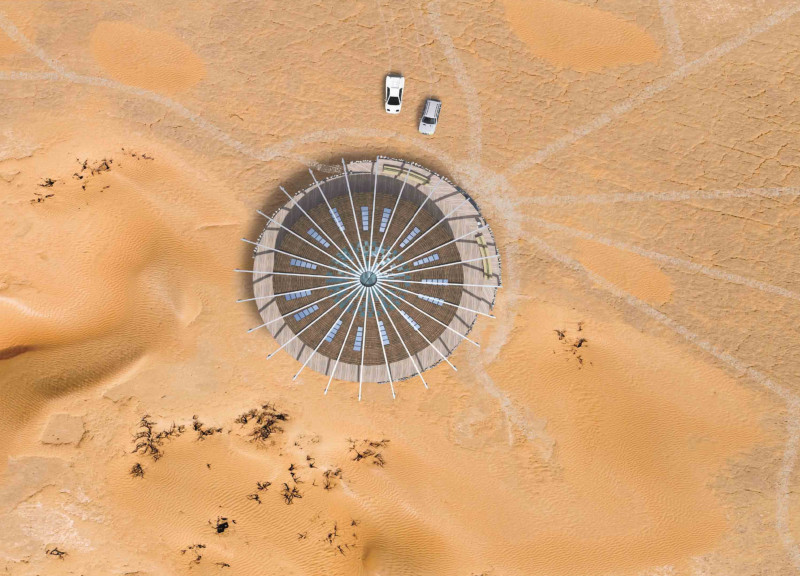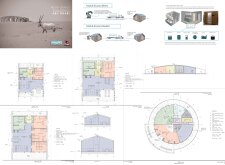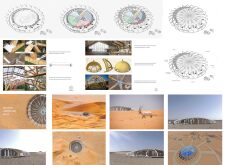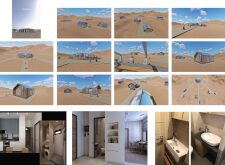5 key facts about this project
The overall form of the building is characterized by its coherent silhouette, which harmonizes with the local context while standing out due to its innovation. The layout is methodically organized, providing seamless transitions between the various functional areas. Each space is designed to cater to specific activities, from communal areas that encourage gatherings to secluded zones offering privacy for reflection and focus. This thoughtful division of space enhances the fluidity of movement throughout the structure, ensuring that it meets the diverse needs of its users.
Materiality plays a crucial role in the design, emphasizing an interplay between natural and modern components. A predominant use of locally sourced materials not only reduces the project's carbon footprint but also embeds the architecture deeply within its geographical context. Materials such as natural stone, glass, and sustainably sourced timber have been selected for their aesthetic qualities and durability. The natural stone provides a grounding effect, fostering a sense of permanence and strength, while the extensive use of glass establishes a visual connection to the outdoors, allowing natural light to permeate interior spaces. This focus on transparency and light enhances the overall ambiance, promoting well-being among occupants.
The project’s unique design approaches are evidenced in the integration of green spaces both within and around the building. Roof gardens, living walls, and landscaped terraces invite biodiversity into the urban environment and contribute to the building's ecological performance. This consideration for ecological impact is an essential element, reinforcing the project's commitment to sustainability. These green features not only serve an environmental purpose but also create a more inviting and serene atmosphere for users, fostering a sense of community in an increasingly urbanized landscape.
Furthermore, the project employs innovative structural solutions that address both aesthetic and functional needs. The incorporation of flexible spaces allows the architecture to adapt to changing uses over time, ensuring longevity and relevance in a rapidly evolving urban context. The structural integrity of the building provides a canvas for artistic expression, with design elements that celebrate craftsmanship and detail. This attention to the smaller aspects of architecture is relevant in creating a cohesive narrative throughout the project, one that blends form and function beautifully.
The use of technology is another notable aspect of the design. Smart building systems have been integrated to enhance user comfort and operational efficiency. These systems control lighting, temperature, and security, aligning with contemporary expectations for modern living and working environments. This integration not only enhances the occupant experience but also optimizes resource usage, making a strong case for future-ready architecture.
In analyzing the architectural plans and sections, readers are invited to explore the distinct characteristics of spatial organization, circulation paths, and material applications that have been meticulously crafted to fulfill the project’s objectives. These elements highlight how the design responds to both the physical environment and the social fabric of the community it aims to serve. By focusing on architectural ideas that prioritize human interaction while maintaining ecological sensitivity, the project stands as a testament to the potential of thoughtful design in fostering a better quality of life.
For those interested in delving deeper into the intricacies of this architectural project, a comprehensive presentation is available, showcasing the architectural designs and insights into each carefully considered aspect of the design. Reviewing the architectural plans, architectural sections, and architectural designs will provide further understanding of the creative and technical decisions that shaped this project. Exploring these elements allows for an appreciation of how careful design can result in spaces that are not only functional but also enrich the communities they inhabit.

























